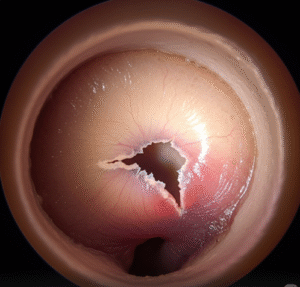As global awareness of climate change and environmental responsibility grows, Korea’s healthcare sector is taking meaningful steps toward sustainability. Hospitals are major consumers of energy and resources, and they produce significant waste. Recognizing their impact, a growing number of Korean hospitals are embracing eco-friendly practices that combine patient care with environmental stewardship. These institutions are pioneering a new vision of healthcare that protects both human health and the planet.
Why Sustainability Matters in Healthcare
Hospitals operate around the clock, consuming vast amounts of electricity, water, and medical supplies. They rely on energy-intensive systems such as air conditioning, sterilization, and lighting. At the same time, they generate large volumes of waste—from disposable plastics to hazardous materials. Globally, healthcare contributes a measurable share of greenhouse gas emissions, and Korea is no exception.
By reducing energy use, managing waste more efficiently, and introducing cleaner technologies, hospitals can lower operating costs and improve air and water quality. For patients and staff, greener hospitals mean healthier indoor environments, better air circulation, and a stronger connection between healthcare and community wellbeing.
In recent years, the Korean government has begun linking environmental performance to hospital evaluation systems. Hospitals are now encouraged to track emissions, implement environmental management programs, and adopt greener operational policies.
Leading Examples of Eco-Friendly Hospitals
Samsung Medical Center (SMC)
Samsung Medical Center has become one of Korea’s sustainability leaders. The hospital has implemented a comprehensive environmental, social, and governance (ESG) strategy that includes:
➡️ Upgrading insulation, replacing lighting with energy-efficient LED systems, and optimizing ventilation to reduce electricity consumption.
➡️ Introducing paperless systems in its pharmacy and administration, significantly cutting paper waste.
➡️ Using reusable containers in place of single-use plastics in funeral and facility services.
➡️ Enhancing waste separation and recycling programs to minimize incineration and landfill use.
These steps have reduced the hospital’s carbon footprint while improving operational efficiency and patient experience.
Ewha Womans University Mokdong Hospital
Ewha Mokdong Hospital is another institution advancing sustainability. It plans to install on-site sterilization and pulverization equipment for medical waste, reducing the need for transportation and minimizing infection risks. By safely treating waste on-site, the hospital lowers its environmental impact and improves safety for both workers and patients.
National Policies and Institutional Efforts
The Korean government has introduced several initiatives to support sustainable healthcare. Hospitals are encouraged to implement environmental management systems, track emissions, and participate in voluntary programs that promote eco-efficiency. ESG management principles—environmental responsibility, social impact, and governance transparency—are now becoming part of hospital culture.
There is also discussion about integrating sustainability indicators into national hospital accreditation systems. These could include energy efficiency, waste management, and water conservation as part of overall quality assessments. Such policies reflect Korea’s broader goal of aligning healthcare modernization with environmental preservation.
Key Strategies for Greener Hospitals
Energy Efficiency and Building Design
Hospitals are retrofitting buildings with high-performance insulation, efficient HVAC systems, and smart energy management tools. Many are installing solar panels or building-integrated photovoltaics to harness renewable power. Automated systems adjust lighting and temperature based on occupancy, reducing unnecessary energy use.
Waste Reduction and Recycling
Hospitals are rethinking single-use culture by introducing reusable instruments, containers, and packaging where safe. Waste is now separated at the source—distinguishing recyclable, general, infectious, and hazardous categories. Some hospitals use in-house sterilization to convert medical waste into general waste, reducing transport emissions.
Water Conservation and Resource Management
Simple measures like low-flow fixtures, greywater recycling, and real-time leak detection help conserve water. Rainwater harvesting systems are being introduced for non-clinical uses such as landscaping and cleaning.
Green Procurement
Hospitals are prioritizing products with eco-labels, minimal packaging, and long life cycles. Preference is given to suppliers with sustainable manufacturing practices and carbon reduction goals. Locally sourced products are also being used to cut transportation emissions.
Digital Transformation
The move toward digital healthcare—electronic records, e-prescriptions, and telemedicine—reduces paper use and travel emissions. Clinics using remote consultations not only save energy but also improve patient accessibility.
Education and Leadership
Successful eco-friendly hospitals cultivate a culture of environmental responsibility. Many have created sustainability committees, staff training programs, and reward systems for departments that meet environmental targets. Transparent reporting and communication keep sustainability a shared goal across all departments.
Challenges to Overcome
Despite growing enthusiasm, several challenges remain.
- High upfront costs: Installing solar panels, advanced waste systems, and efficient HVAC equipment requires large initial investments.
- Complex regulations: Strict safety rules sometimes limit the reuse of medical tools or the adoption of certain green materials.
- Cultural resistance: Some healthcare workers fear that sustainability measures might interfere with workflow or patient care.
- Data limitations: Many hospitals lack accurate data on resource use and emissions, making it difficult to track improvements.
- Limited incentives: Financial benefits often take years to appear, and government subsidies are still limited.
Practical Steps for Smaller Clinics and Regional Hospitals
Smaller healthcare facilities can also participate in Korea’s sustainability movement.
➡️ Start with energy-saving basics such as LED lighting and programmable thermostats.
➡️ Set up clear recycling and waste segregation stations in every department.
➡️ Go paperless with electronic billing, digital records, and online communication.
➡️ Use telemedicine and digital scheduling to reduce travel and resource use.
➡️ Engage staff in green initiatives and designate a sustainability champion to lead efforts.
➡️ Partner with local governments or waste services for recycling programs.
Even modest changes can reduce costs, improve workplace morale, and contribute to the broader national sustainability goals.
Looking Ahead: The Future of Sustainable Healthcare in Korea
Korea’s path toward greener healthcare is just beginning. As awareness grows, the government may introduce new incentives, certification programs, and recognition systems for hospitals that meet environmental standards. Hospitals could soon be evaluated not only on medical outcomes but also on sustainability performance.
Future trends may include:
➡️ Integration of renewable energy into all new hospital designs.
➡️ Expanded funding for energy-efficient retrofits.
➡️ Development of eco-friendly medical devices and biodegradable packaging.
➡️ Cross-industry collaborations between hospitals, technology firms, and green energy providers.













